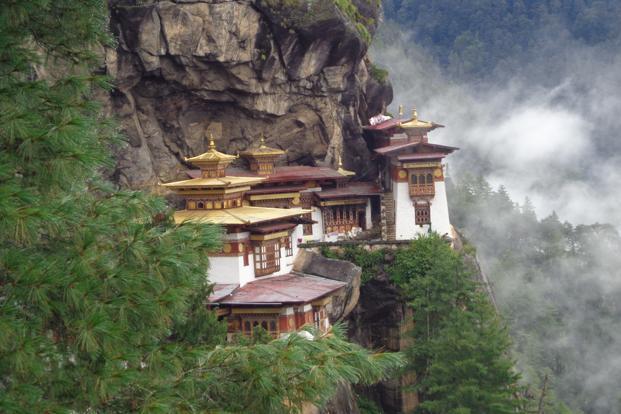How Bhutan became the world’s greenest country
Carbon sinks, 70% forest cover, powered almost entirely by mountain streams—Bhutan is a poster child for green living.
It is the only country in the world that is carbon negative, which means it produces more oxygen than it consumes. Bhutan generates about 2.2 million tonnes of carbon annually, yet its forests absorb three times this amount, which creates a carbon sink.
Sure, it’s a small country with a population of only 750,000, but other smaller countries—the Maldives, Luxembourg—haven’t managed this yet.
Flying into Bhutan over the Himalayas, the first thing you notice are the trees. A thick blanket of green wraps around the mountains, a complete contrast to the denuded hills of India.
The drive from Paro airport to Thimphu—all hairpin curves and idyllic scenery—is almost unbelievably gorgeous. The streets are virtually empty, except for a few cars, and people walking about in traditional costumes, a stripy gho for the men and a long woven skirt called the kirafor the women.
The buildings are all less than six storeys tall, and are uniformly in Bhutanese style. It’s like an Asian version of Noddy’s toy town.
How did Bhutan get where it is? Everyone I ask credits the fourth king, Jigme Singye Wangchuck, for Bhutan’s green status. Rightly so. In 1972, as every neighbouring nation focused on increasing their gross domestic product (GDP), the maverick Wangchuck introduced the gross national happiness (GNH) concept.
His hypothesis: GDP ignored the basic need of every human being: happiness.
“The fourth king was a visionary,” says Thinley Namgyel, chief environment officer of the climate change division at Bhutan’s National Environment Commission. “He passed rules mandating that every household should get permission to extract firewood. The export of timber was banned and community forestry was encouraged. Thirty per cent of the forests were declared protected areas, and linked with corridors, so animals could travel between them.”

